1 Fish 2 Fish: How to Roast a Fish Whole
It's all around us: the studies exclaim the health benefits of fish and those miracle omega-3 fats, which you can either get by pill popping those capsules or by simply eating more fish. With the New Year come and gone, and the resolutions stated, it is time for us to try and at least keep one: We're going to try to eat more fish. It's a rather hard resolution to keep--fish is expensive and difficult to cook well (especially now, when the grill is retired). And just like buying the same cuts of beef, it can become routine eating the same salmon steak or tilapia fillet, which is all we can afford most of the time. We'd like to feast on fresh tuna every other day, but we'd probably have to settle for the canned most of the time. How to eat fish regularly, economically, with consistent results?
We tried a little experiment: we got two whole fish, one beautiful looking Striped Bass and one ugly-duckling Porgy, and roasted them side-by-side in the oven. We've all seen the whole fish lying on ice at the grocery, noticed the rather low price per pound, but passed by with little idea what one is supposed to do with such a thing. We picked a respectably priced option (the Bass), which we hoped would guarantee decent results, alongside the less-enticing Porgy.
The difference between our two fish could not have been more apparent. Where the Bass had bright, vibrant colors, the Porgy was grey and dull. Where the flesh of the Bass had a gorgeous tint of red, the porgy was plain looking and full of bones. The bass even looked happier, not to mention far more attractive and likely to pick up a date. Of course, that Bass set us back $15, which was enough to barely feed two people and was comparable in price to some of the choicest steaks. The Porgy, meanwhile, set us back a cool $5, total. We could see the differences, but would the taste be so apparent?
This technique runs along similar lines to our disdain of boneless, skinless chicken breasts --when you cook an animal whole, on the bone with all the muscles and tissue and whatever else--it always ends up tastier, more succulent, less likely to dry out and be boring. Especially in the case of a smaller fish like the Porgy--which would give you a lousy showing if you tried to cut out the fillets around it's many, many bones--roasting the fish whole simplifies the process.
Here we have the Bass.
And poor Mr. Porgy.
Our recipe was very basic: a lemon juice/olive oil mixture was the sauce, poured over the fish before they went into the oven with a generous shower of salt and pepper. There were two schools of thought here, as there are with most roasting recipes: one says low, delicate heat, the other says high, high heat to caramelize and produce a robust result. In the interest of time, we went with the higher temp, though our trusted friend Madeleine Kamman was in the low-heat school of thought, and she's often right--we'd like to try her method in the future.
Make sure to have your fish guy descale the fish and gut it and remove the gills. While we're on the subject--the place to get whole fish is from a fishmonger or a very reputable grocery store fish counter with a real person behind it--this is not time for shrink-wrapped anything. Rinse the fish thoroughly and pat dry with paper towels. Preheat the oven to 500 degrees. Take a sharp knife and cut three shallow slits along the side of the fish, but don't cut through the fillet. Just enough to puncture the skin.
Take an entire head of garlic, cut it in half, and rub the open ends all over everything: the skin, the insides, the head, the pan, your arm, etc.
Pour the marinade over the fish, and gently flip them back and forth until coated inside and out.
Roast for about 17-20 minutes (8-10 for each inch of thickness). Separate the fish gently with a fork to check doneness--it should be just a tiny bit translucent when you take it out, since it will continue to cook when out of the oven.
Remove the fish to a platter as delicately as you can. While they cool (about 4-5 minutes), deglaze the pan with white wine and add parsley, reducing over medium-high heat until it becomes a thick sauce (as far as the amounts, it's all rather inexact, just go with it). While that's happening you can serve up the fish into fillets. This is the tricky part, but the slits you've made already will help. If the fish is 1 pound or so, serve it whole and let the diner pick it apart. 2 pounds, slice off the head and cut along the backbone, serving half to each person. Strain the deglazed fish sauce to get out bits of skin and whatever else, and serve alongside or pour it over the fish once plated.
The verdict? Much like you'd expect, the Bass was cleaner, offered thicker, better-tasting flesh, had an overall impression of higher quality. But we made sure to try the Porgy first, before we got spoiled, and all around the table we were impressed. Very tender meat, subtle flavor (the marinade was a nice background taste, and the sauce was truly superb), light yet satisfying. But all the approving head nods disappeared when we tasted the Bass. As well, eating the Porgy can sometimes resemble a juvenile game of Operation, one that will undoubtedly leave a few small bones in your mouth. Good luck.
Bass, Fish, Porgy, Seafood

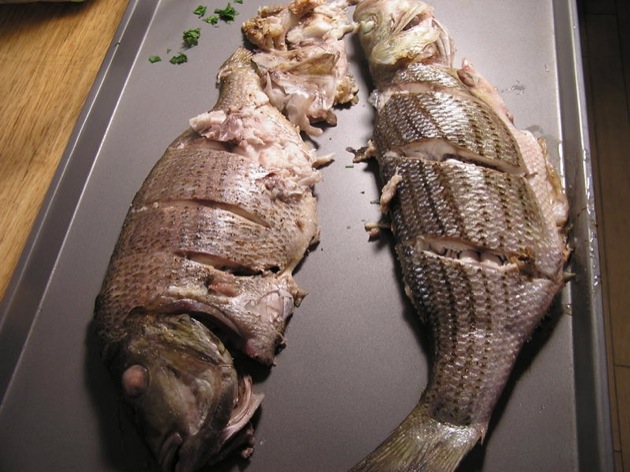
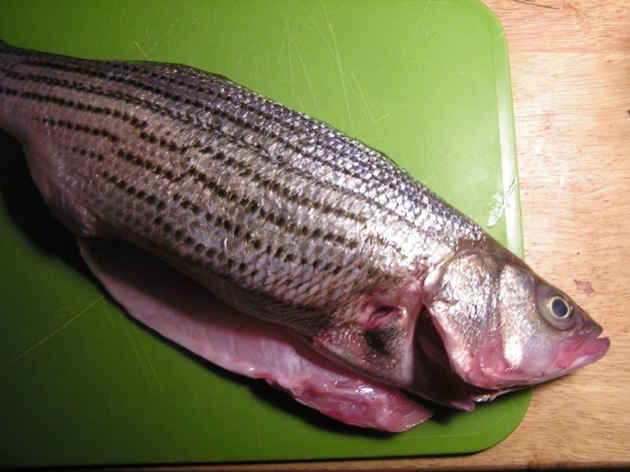
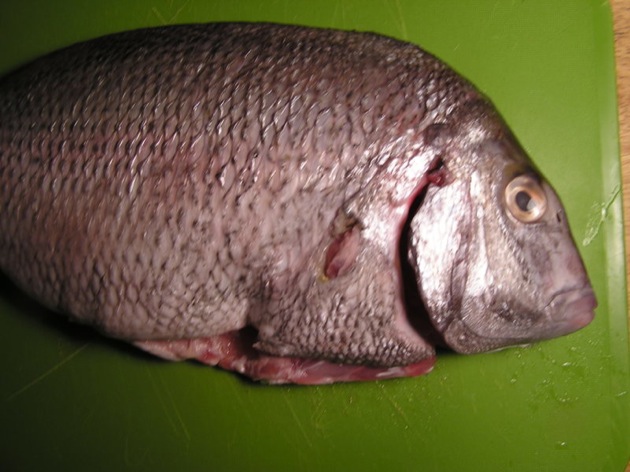
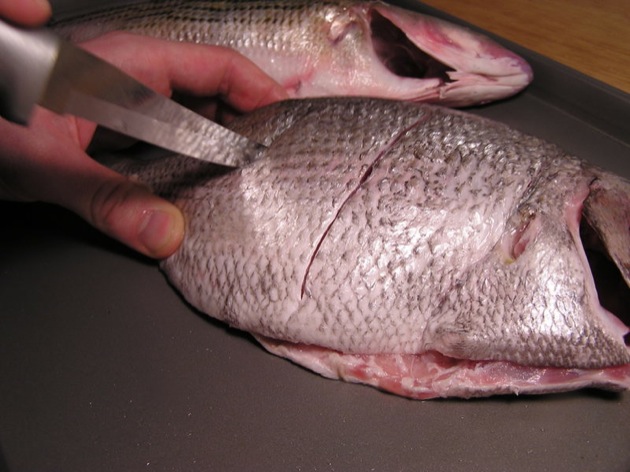
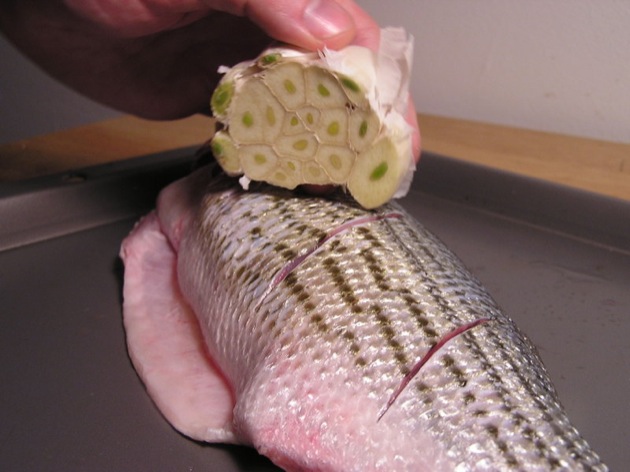
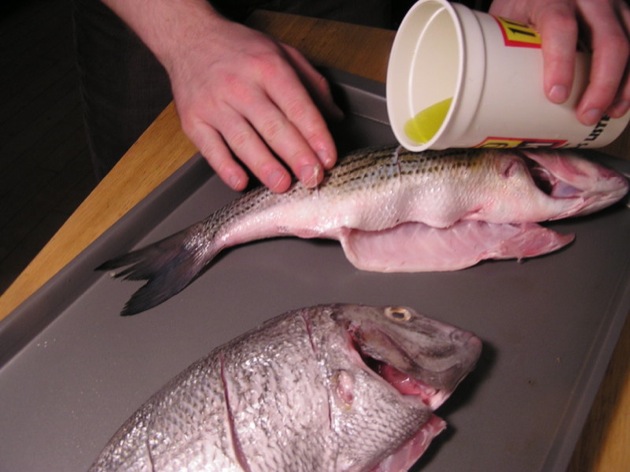
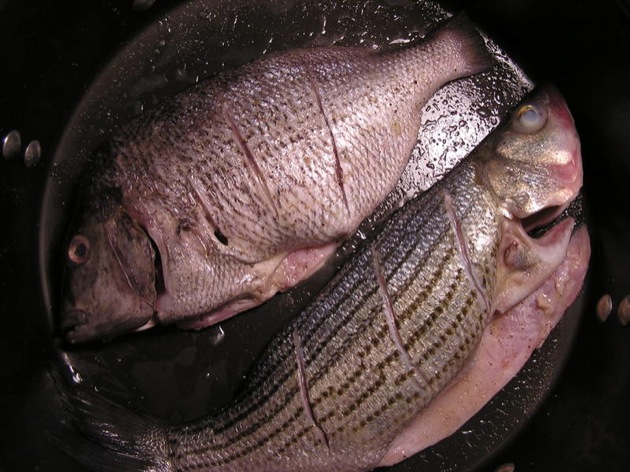
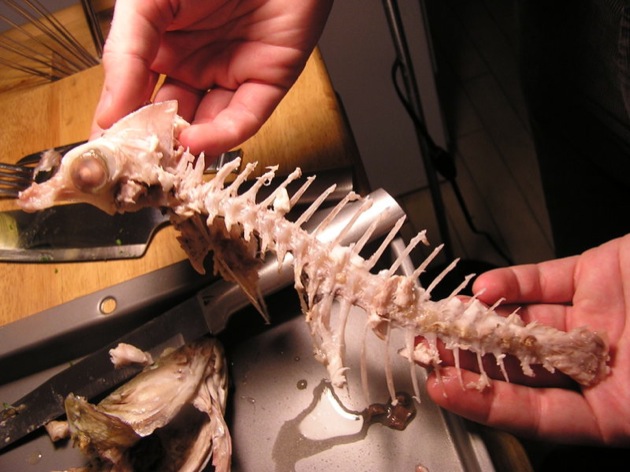
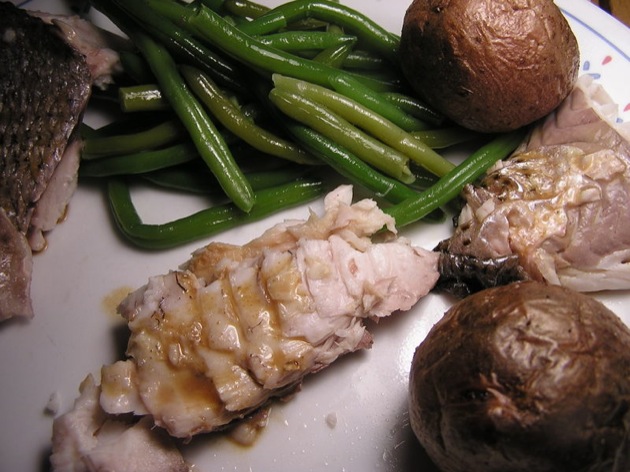
Comments:
Blog Comments powered by Disqus.